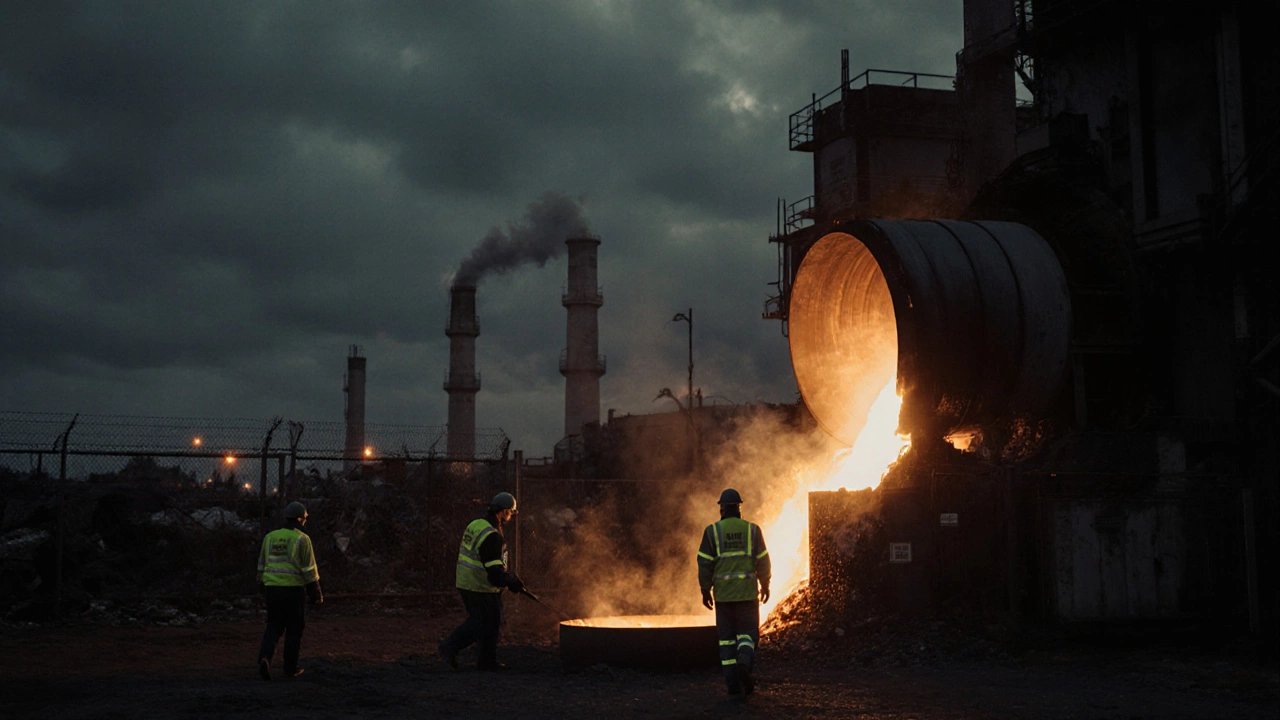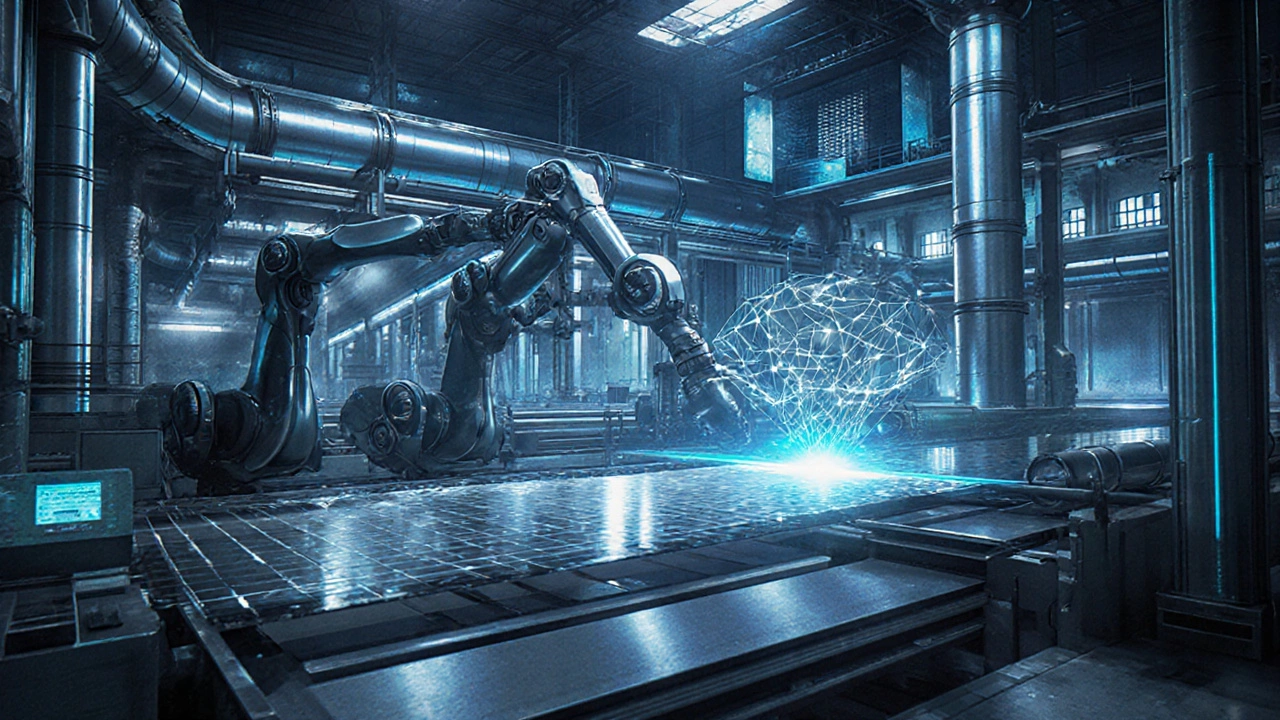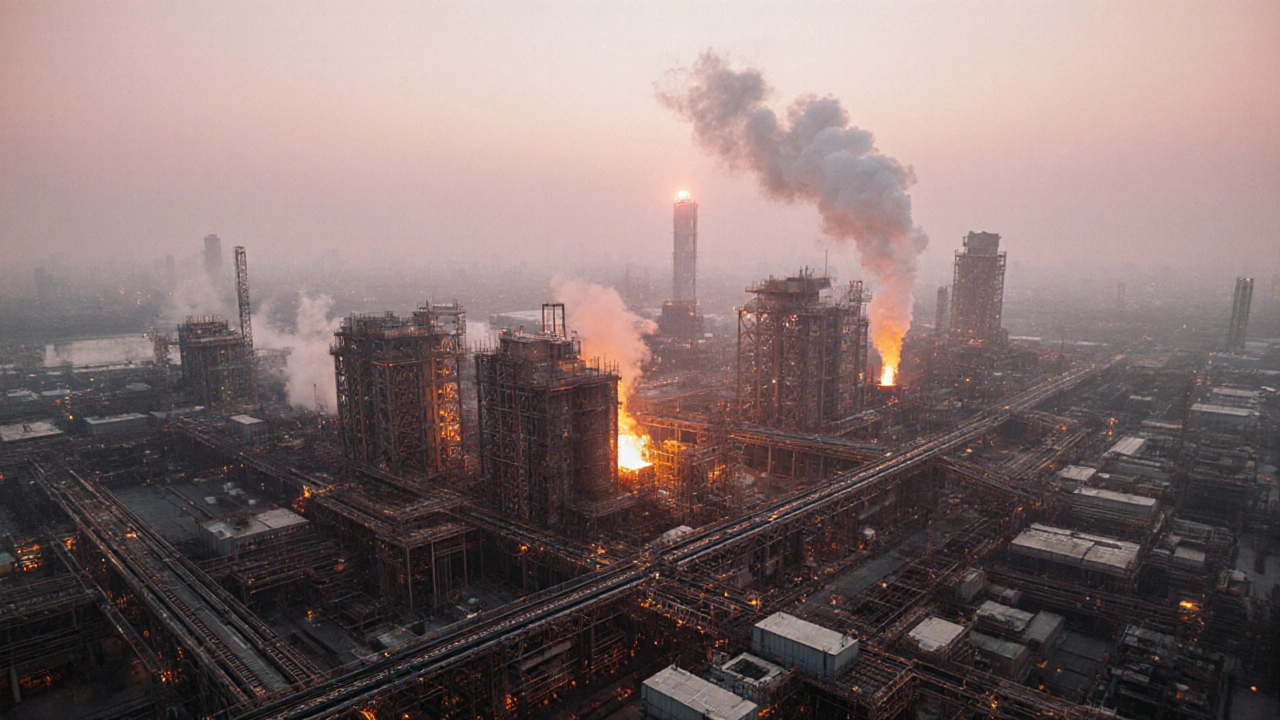Steel Plant Comparison Tool
Top Steel Plants Comparison
Compare the world's leading steel producers by key metrics like production volume, innovation, and sustainability.
Production Volume Comparison
Comparison Metrics
Top Steel Plants Details
Baowu Steel Group
ArcelorMittal
Nippon Steel
POSCO
HBIS Group
Industry Insights
Key Takeaway: While Baowu leads in production volume, the steel industry is shifting toward sustainability. The top 5 plants are all investing in green steel technologies to reduce carbon footprint.
Future Trend: By 2030, China will still dominate production volume, but the companies that lead in green steel innovation will gain market trust and competitive advantage.
Which steel plants actually run the world?
If you’ve ever wondered where the steel in your car, your fridge, or the skyscraper downtown came from, the answer starts at one of the world’s biggest steel plants. These aren’t just factories-they’re industrial powerhouses that move millions of tons of metal every year. And right now, five of them dominate global production, shaping everything from infrastructure to electric vehicles.
The steel industry doesn’t run on hype. It runs on volume, efficiency, and raw scale. A single blast furnace can produce over 5,000 tons of liquid steel in a day. The top plants don’t just make steel-they control supply chains, influence global prices, and employ tens of thousands. So who’s really leading the pack in 2025?
1. Baowu Steel Group, China
When it comes to sheer output, no one comes close to Baowu Steel Group. Headquartered in Shanghai, this state-owned giant merged with China’s second-largest producer, Wuhan Steel, back in 2020. Since then, it’s only grown. In 2024, Baowu produced 130 million metric tons of crude steel-more than the entire output of the United States and nearly twice that of India.
It’s not just size. Baowu operates over 30 major plants across China, including the Ma’anshan and Wugang facilities, each with multiple blast furnaces and continuous casting lines. Their biggest plant, the Baoshan site in Shanghai, alone produces 20 million tons a year. They’re also investing heavily in green steel tech-hydrogen-based reduction trials are already underway at two of their sites.
2. ArcelorMittal, Global (Headquartered in Luxembourg)
ArcelorMittal isn’t just a company-it’s a global network. Formed in 2006 from the merger of Arcelor and Mittal Steel, it’s the world’s second-largest producer with 80 million metric tons of steel output in 2024. What sets ArcelorMittal apart is its footprint: it runs major plants in 17 countries, from India to Brazil to the U.S.
Its largest single facility is the ArcelorMittal Kryvyi Rih plant in Ukraine, which, despite war-related disruptions, still produces over 10 million tons annually. In the U.S., its Cleveland-Cliffs partnership in Ohio runs one of the most modern mini-mills in North America. ArcelorMittal is also leading in low-carbon steel innovation, with its “HIsarna” pilot plant in the Netherlands using 20% less CO₂ than traditional methods.

3. Nippon Steel Corporation, Japan
Nippon Steel, formed from the merger of Nippon Steel and Sumitomo Metal Industries in 2012, is the third-largest producer globally, with 48 million tons in 2024. Unlike Baowu or ArcelorMittal, Nippon Steel focuses on high-quality, high-value steel-think automotive sheets for Toyota and Tesla, or ultra-thin steel for smartphone cases.
Their flagship plant is the Kashima Works in Ibaraki Prefecture, Japan. It’s one of the most automated steel mills on Earth, with AI-driven quality control systems that detect micro-defects in real time. They’ve also invested $2.3 billion in their “Green Steel” initiative, aiming to cut emissions by 30% by 2030 using hydrogen injection and carbon capture.
Nippon Steel’s tech edge is why automakers pay a premium for their products. Their steel is used in 70% of Japan’s EVs and over half of all high-end motorcycles globally.
4. POSCO, South Korea
POSCO-short for Pohang Iron and Steel Company-is a national champion with global reach. In 2024, it produced 43 million tons of steel. Its Pohang and Gwangyang plants are among the most efficient in the world, with energy use per ton of steel among the lowest on record.
What makes POSCO special is its vertical integration. It owns iron ore mines in Australia, coal mines in Indonesia, and even controls shipping routes through its logistics arm. This lets it lock in raw material costs and avoid supply shocks. Their Gwangyang plant, built in 2001, still holds the record for the highest annual output per square meter of plant area.
POSCO is also a leader in advanced materials. Their ultra-high-strength steel is used in Boeing 787 fuselages and nuclear power plant components. They’ve partnered with Hyundai to develop steel for hydrogen fuel tanks, and their R&D center in Seoul has over 2,000 engineers working on next-gen alloys.

5. HBIS Group, China
HBIS Group, formerly Hebei Iron and Steel, is China’s fourth-largest producer and fifth-largest globally, with 41 million tons in 2024. While smaller than Baowu, HBIS is a powerhouse in the northern region, with its Tangshan plant being the single largest steelmaking complex in the world by land area.
Unlike other top producers, HBIS has aggressively shut down older, polluting facilities and replaced them with ultra-modern electric arc furnaces. Over 60% of its output now comes from recycled scrap, making it one of the most sustainable large-scale producers on Earth. Their new Tangshan facility uses AI to optimize energy use, cutting electricity consumption by 18% since 2022.
HBIS also supplies steel to China’s high-speed rail network, which expanded by 4,000 kilometers in 2024 alone. Their steel is engineered to handle extreme temperatures-from -30°C in northern provinces to 45°C in the south-without cracking.
Why size isn’t everything
Just because a plant produces the most steel doesn’t mean it’s the best. Some of the most innovative steel comes from smaller, specialized mills. For example, Sweden’s SSAB uses hydrogen to make fossil-free steel, but only produces 2 million tons a year. Still, companies like Volvo and BMW are signing long-term contracts with them because their steel has zero carbon emissions.
Meanwhile, the U.S. has over 100 mini-mills that produce over 70% of its steel using scrap metal and electric arc furnaces. These are smaller, but they’re faster, cheaper, and more flexible than giant blast furnaces.
So while the top five plants control nearly half of the world’s steel output, the future belongs to those who combine scale with sustainability. The steel industry is no longer just about making more-it’s about making better, cleaner, and smarter.
What’s next for global steel production?
By 2030, China will still lead in volume-but its growth is slowing. Meanwhile, India’s JSW Steel and Brazil’s Companhia Siderúrgica Nacional (CSN) are expanding fast, aiming to crack the top five by 2030. The real shift? Green steel.
Hydrogen-based steelmaking is no longer science fiction. Projects in Germany, Sweden, and Australia are scaling up. If these succeed, the top five plants in 2035 might look very different. The ones that adapt fastest will dominate-not just in output, but in market trust.
For now, the top five are still the backbone of global industry. But the rules are changing. The next decade won’t be won by the biggest furnace-it’ll be won by the smartest one.
What is the largest steel plant in the world?
The largest steel plant in the world by annual output is the Baowu Steel Group’s Baoshan plant in Shanghai, China. It produces over 20 million metric tons of crude steel each year, making it the single most productive steel facility on Earth. Baowu as a whole produced 130 million tons in 2024, more than any other company.
Which country produces the most steel in the world?
China produces the most steel in the world, accounting for over 50% of global output in 2024. Baowu Steel Group, HBIS Group, and other Chinese producers together made nearly 700 million metric tons last year. That’s more than the rest of the world combined.
Is ArcelorMittal bigger than Baowu?
No. ArcelorMittal produced 80 million metric tons of steel in 2024, while Baowu produced 130 million. Baowu is nearly 60% larger. ArcelorMittal is the second-largest producer, but it operates across many countries, while Baowu is concentrated in China.
Are U.S. steel plants still competitive?
Yes, but differently. The U.S. doesn’t have any plants in the global top five by volume, but its mini-mills are among the most efficient. They use scrap metal and electric arc furnaces, which are cheaper and emit less CO₂ than traditional blast furnaces. U.S. steelmakers now produce over 70% of domestic steel this way, and they’re leading in high-strength, lightweight alloys for EVs and aerospace.
What is green steel, and who’s making it?
Green steel is steel made without coal or coke, using hydrogen instead to reduce iron ore. This cuts CO₂ emissions by up to 95%. Companies leading this include Sweden’s SSAB, Germany’s ThyssenKrupp, and Australia’s H2 Green Steel. Nippon Steel and ArcelorMittal are also testing hydrogen injection in their blast furnaces. Baowu and HBIS are investing in carbon capture, but true green steel is still in early commercial stages.
